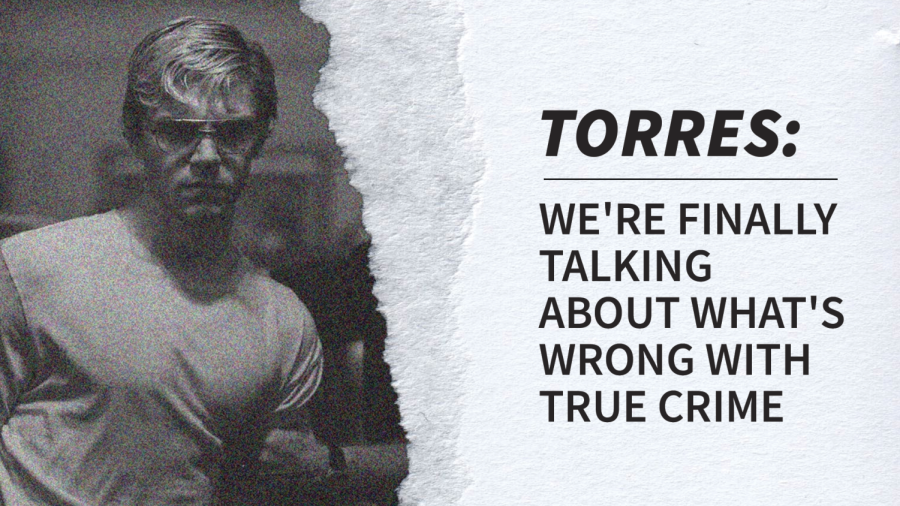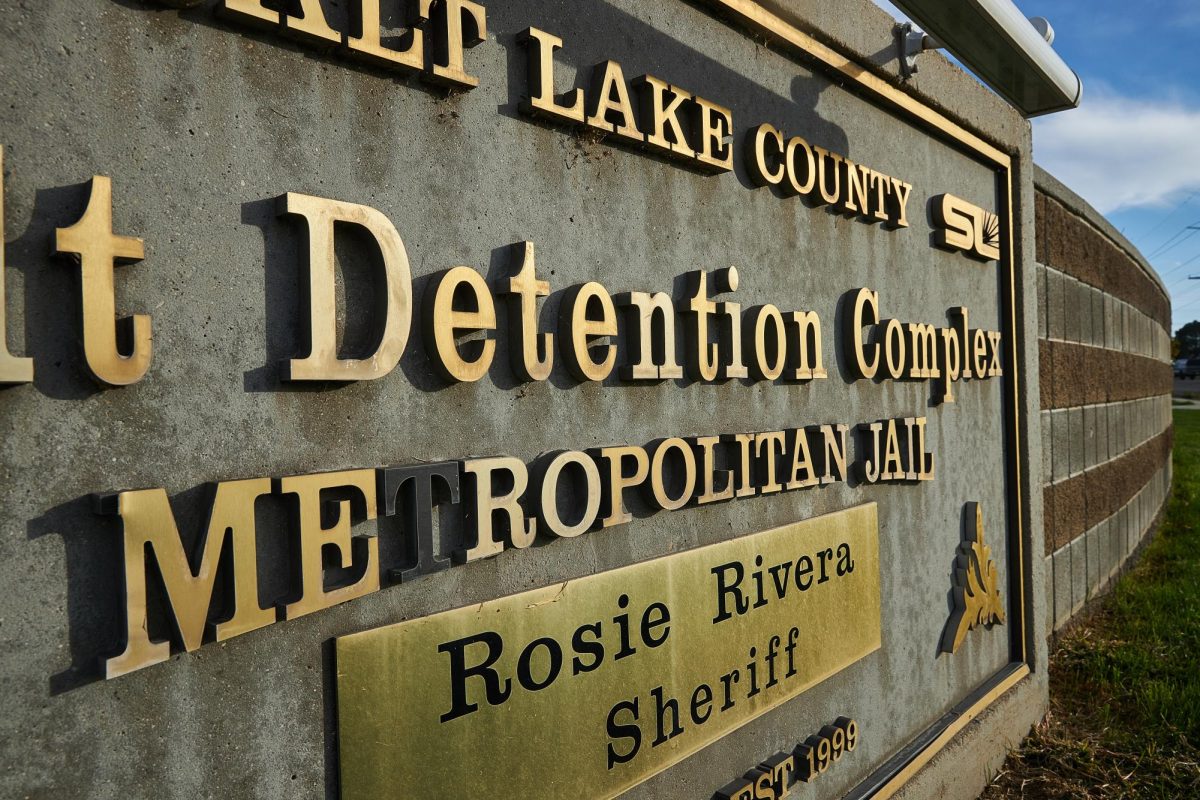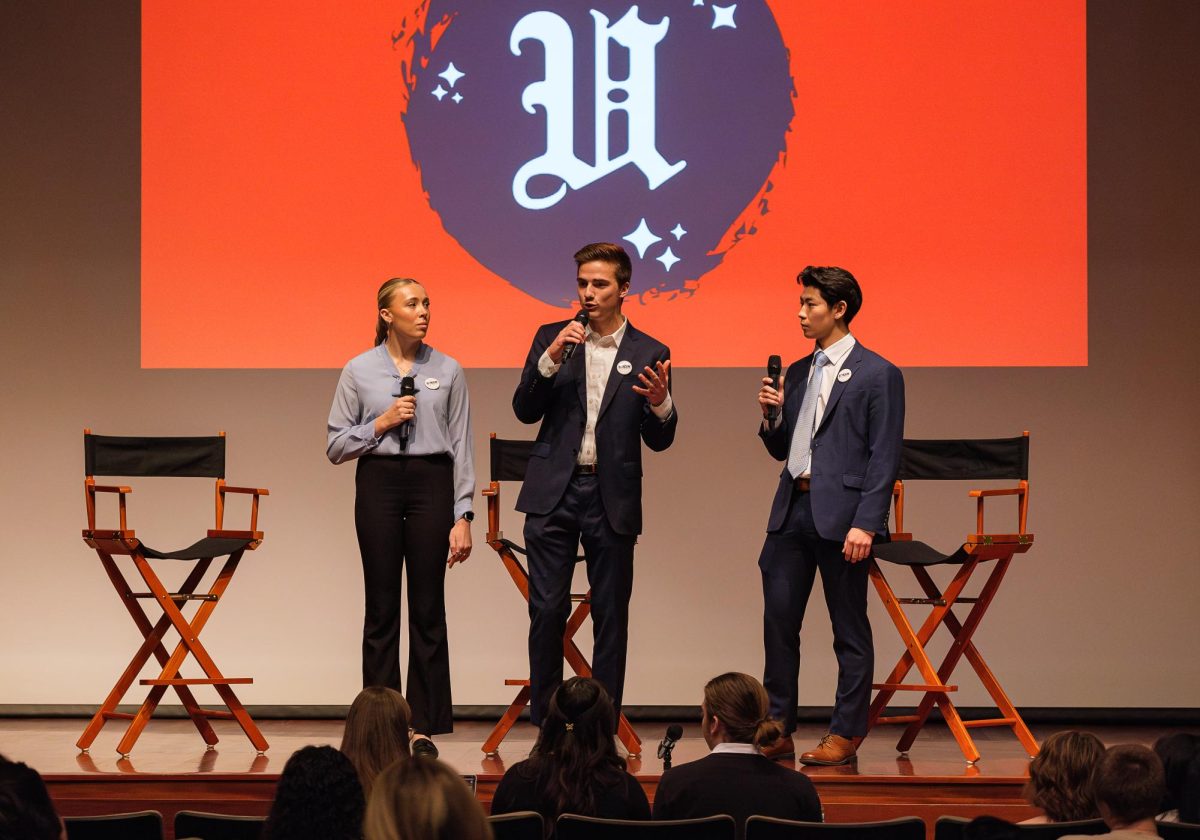Torres: We’re Finally Talking About What’s Wrong with True Crime
(Graphic by Sydney Stam | The Daily Utah Chronicle)
October 18, 2022
Utah’s correspondence with true crime stretches to an uncomfortable degree, whether it’s Arthur Gary Bishop, Susan Powell, Gabby Petito or Ted Bundy. And we have the perfect audience for it, too. True crime is recognized for its mass appeal to white women, and when 93% of women in Utah are white, this amplifies the national wave of true crime media consumption. But recently, controversial retellings — including Netflix’s Dahmer and The Gabby Petito Story — have sparked conversations about the ethics of consuming true crime.
The commodification of true crime disregards the effect on victims of violence, paints an inaccurate portrait of our criminal justice system and fetishizes violence against white women at the expense of marginalized people.
The True Victims
The obsession with true crime has created a phenomenon where instances of violent crime are an opportunity for entertainment. What started as a genuine interest in unsolved cases developed into mass obsession with personal tragedies.
The privilege of being able to see yourself as an outsider to these tragedies perpetuates a system in which others suffer. Recently, Kim Kardashian announced the release of her own true crime podcast. Ryan Murphy’s $300 Million contract with Netflix led to his production of “Dahmer.” True crime is Hollywood’s new muse and it leads to real pain.
When the Gabby Petito case broke, the extensive media coverage was fueled by the public’s fixation. And the movie premiere of this tragedy was strategically released during domestic violence awareness month — a thinly veiled ploy to avoid accountability for profiting off the loss of life.
The real-life unraveling of the Petito case exposed the lack of empathy for violent crime victims. And with Netflix receiving well-deserved backlash for its traumatic portrayal of the Jeffrey Dahmer trial, we’re finally facing the consequences of our true crime consumption. But more people are affected than just victims of violence.
The True Violence
True crime stories primarily portray white-on-white crime. Podcast narrators love to boast how simple it would be to “call the cops,” but this perspective is naive to the 40% of law enforcement families experiencing domestic violence. It ignores the fact that, to marginalized groups, calling 9-1-1 means risking police violence and life-ending consequences.
Famously, the Zodiac killer evaded capture because a dispatcher described the killer to be a Black man to police in the area after a murder. They allowed the killer, a white man, to leave because he didn’t match the racialized description they had received. Although true crime can point out critical flaws in our criminal justice system, it falls short of fully holding it accountable.
True crime junkies point out the issues in the policing system in some stories, and in others praise law enforcement for their efforts. They position themselves as amateur sleuths, with podcast hosts conducting their own interviews and following leads on their own. They align themselves with professionals who dedicate intensive effort and crime to gathering evidence for a court case. True crime fanatics mistake themselves as journalists and detectives.
True crime isn’t journalism, it’s a dramatization of violence for entertainment. When true crime junkies engage with the content, they take police speculation and narrative prose as truth. And because most enjoyers of true crime are white women, their stories are told the most. This leads to a more dangerous phenomenon — missing white woman syndrome.
True Justice
The sensationalism of violence against white women means other marginalized groups are left behind. Gabby Petito had an entire subreddit dedicated to scrounging up every detail of her disappearance, and 51 years after the latest Zodiac murder, dedicated cryptographers finally cracked the killer’s ciphers.
True crime also shares a prolonged history of recounting violence from a white lens. While true crime stories motivated for racial justice exist, there is still a disproportionate lack of media coverage for Black and Latine victims of violent crime.
Meanwhile, Indigenous women are murdered at a rate 10 times higher than any other ethnic group. The task force to address this, Lady Justice, wasn’t established until 2019. We don’t take violence or the disappearance of POC as seriously as their white counterparts, or at least we don’t take action against their killers or help the victims.
At the U, we sit in the unique position of going to the same university as one of the most notorious serial killers, Ted Bundy. Our campus community was once affected by this violence, and I urge you to imagine how the modern phenomenon of true crime would affect you if his crimes happened today. Would you feel comfortable with the dramatization of the deaths of you or your peers?









